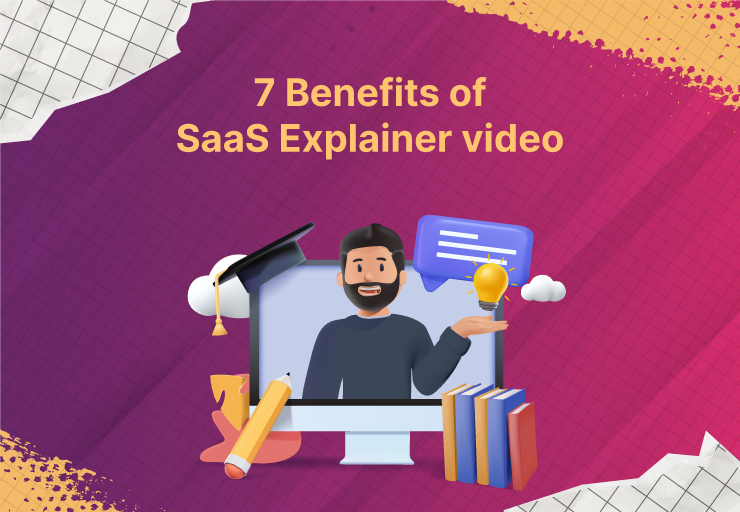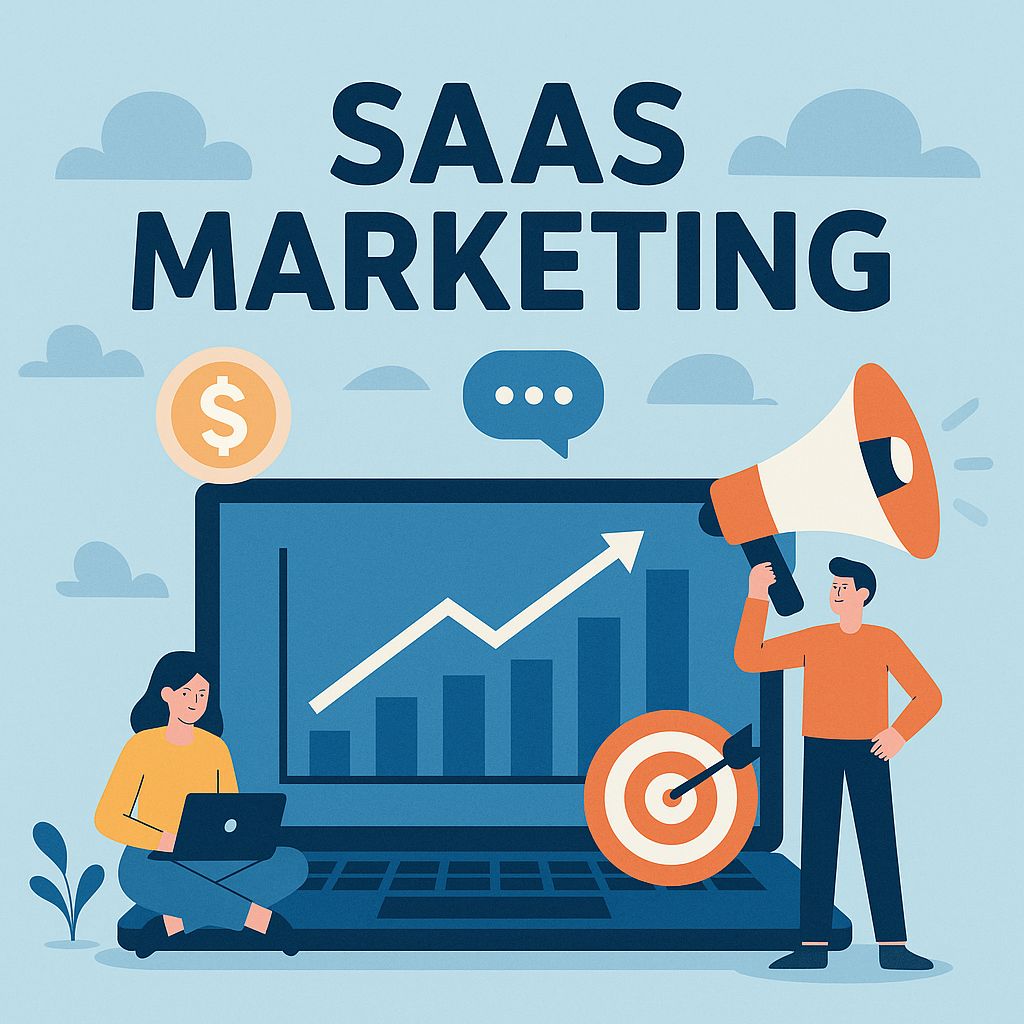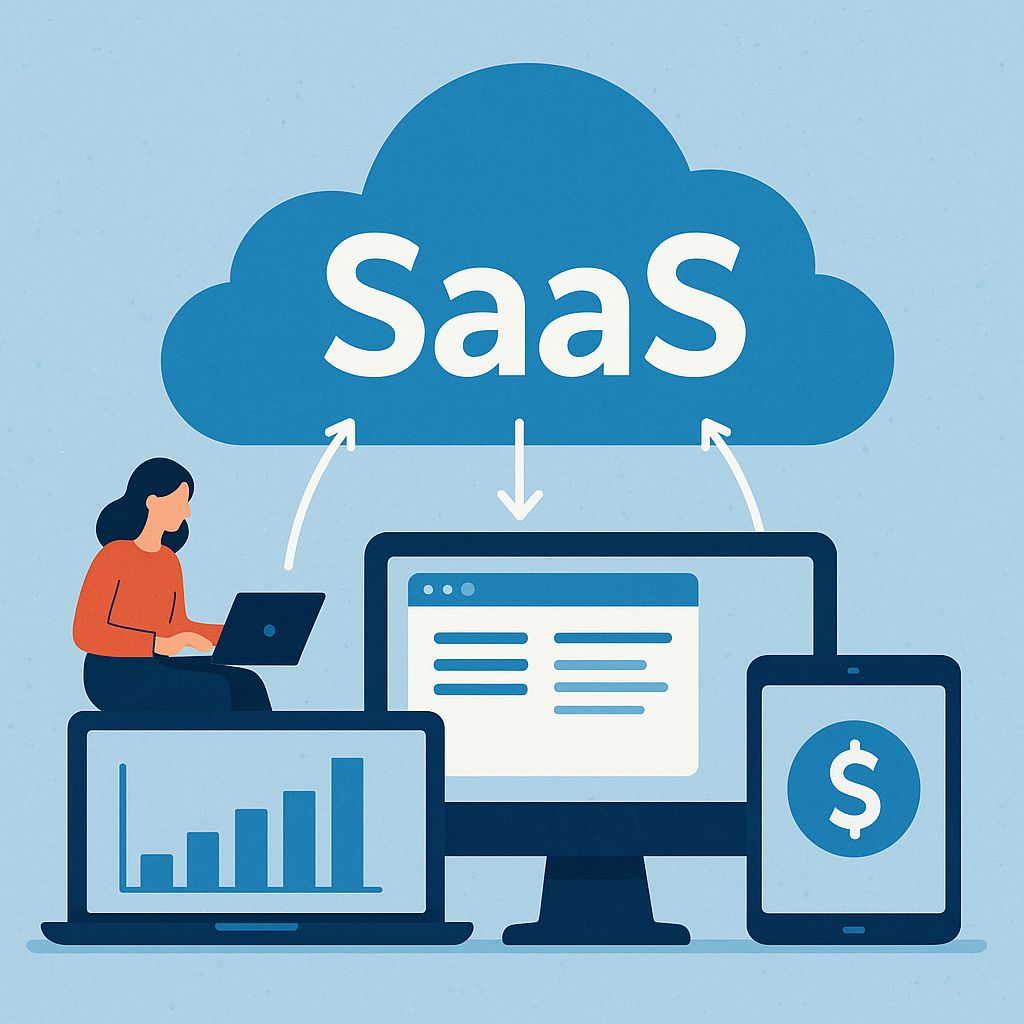Key Takeaways
- High-converting explainer videos can increase SaaS conversion rates by up to 80% when strategically implemented
- The first 15 seconds of your explainer video are critical – this is where you must establish your value proposition
- Effective explainer videos follow a proven formula that includes problem identification, solution presentation, and clear calls-to-action
- Spire’s explainer video platform helps SaaS companies create videos that reduce sales cycle length and increase average contract value
- Visual storytelling bypasses logical resistance, tapping directly into emotional decision-making centers of the brain
SaaS companies are facing a growing challenge: capturing and maintaining user attention in an increasingly crowded marketplace. With the average attention span now shorter than a goldfish’s, how do you effectively communicate your product’s value proposition? The answer lies in high-converting explainer videos.
Video content isn’t just trending – it’s revolutionizing how SaaS companies acquire and convert customers. Spire has been at the forefront of this revolution, helping SaaS startups clarify their messaging through powerful visual storytelling that drives real business results. Their approach focuses not just on creating beautiful videos, but on crafting strategic assets that move prospects through your funnel with remarkable efficiency.
Why Explainer Videos Are Dominating SaaS Customer Acquisition
The human brain processes visual information 60,000 times faster than text. This biological fact alone explains why explainer videos have become the cornerstone of successful SaaS marketing strategies. When prospects can see your solution in action, they grasp complex concepts instantly – eliminating the friction that typically slows down your sales process.
Beyond comprehension speed, explainer videos create an emotional connection that static content simply cannot match. They combine visuals, motion, voice, and music to engage multiple senses simultaneously, creating a more memorable experience. This multisensory approach makes your message stick in a way that text-based explanations never could.
Data supports this shift to video-centric marketing: SaaS companies utilizing explainer videos report 49% faster revenue growth than those without. Even more compelling, websites with explainer videos on their homepage experience a 20% increase in conversion rate on average. These aren’t incremental improvements – they’re game-changing metrics that directly impact your bottom line.

6 Must-Have Elements in High-Converting SaaS Explainer Videos
Not all explainer videos deliver equal results. Through analyzing thousands of high-performing SaaS videos, clear patterns emerge around what drives conversions versus what creates merely entertaining content. The difference between a video that generates leads and one that simply accumulates views comes down to these six critical elements.
1. Problem-Solution Framework That Resonates With Target Users
Effective explainer videos don’t start by talking about your product – they start by acknowledging your prospect’s pain points. The classic problem-solution framework works because it creates immediate relevance. Before presenting your solution, establish that you understand the specific challenges your target users face. This creates the emotional hook that keeps viewers engaged through the rest of your message.
This approach follows the psychological principle of tension and release. By first highlighting the problem (creating tension), then introducing your solution (providing release), you create a compelling narrative arc that mirrors how humans naturally process information and make decisions.
2. Clear Value Proposition Within First 15 Seconds
You have precious little time to capture attention. Research shows that 20% of viewers will click away from a video within 10 seconds if they don’t understand its relevance to them. This makes your opening moments critical for conversion. For more insights on creating effective videos, explore explainer videos that sell.
Your value proposition should answer one simple question: “What specific problem does your product solve, and how does it improve the user’s life?” This isn’t about features – it’s about transformation. The most successful explainer videos establish this transformation promise within the first 15 seconds, creating a compelling reason for viewers to keep watching.
3. Simple Visual Metaphors That Explain Complex Features
The most effective SaaS explainer videos transform complex technical concepts into accessible visual metaphors. Rather than explaining your API integration process with technical jargon, show it as a puzzle piece clicking perfectly into place. These visual shortcuts bypass the logical brain and create instant comprehension, particularly valuable when explaining sophisticated software solutions to non-technical decision-makers. For more insights, explore how Spire Video turns complex SaaS products into simple sellable stories.
Using relatable analogies allows viewers to grasp your product’s value without getting lost in implementation details. This approach is especially powerful for complex B2B products where the technical complexity could otherwise become a barrier to understanding the core value proposition.
4. Strategic Call-to-Action Placement
A beautiful explainer video that fails to direct viewer action is a missed opportunity. High-converting videos include clear, compelling calls-to-action that guide prospects toward the next step in your funnel. The most effective CTAs appear at moments of peak emotional engagement – typically right after you’ve demonstrated how your solution resolves the viewer’s pain point.
Contrary to common practice, research shows that including multiple, contextual CTAs throughout longer videos (rather than just at the end) can increase conversion rates by up to 30%. This approach captures interest at the moment it peaks, rather than waiting until the end when attention might have waned.
5. Brand Voice Consistency
Your explainer video isn’t a standalone marketing asset – it’s an extension of your brand voice. Visual style, script tone, music selection, and narrator voice must all align with your broader brand identity. This consistency builds trust and reinforces brand recognition, particularly important for early-stage SaaS companies still establishing market presence.
The voice actor you select can dramatically impact how your message is received. Studies show that voice matching – selecting a narrator whose tone and characteristics align with your target audience’s expectations – can improve message retention by up to 40%. This subtle alignment creates subconscious credibility that text alone cannot achieve.
6. Mobile Optimization
With over 70% of video content now consumed on mobile devices, optimization for small screens isn’t optional – it’s essential. Mobile-optimized videos feature larger text, tighter framing on important elements, and simpler visuals that remain clear on smaller displays. They also account for the likelihood of viewers watching without sound, incorporating clear visual cues and optional captions.
The most successful SaaS companies now create multiple versions of their explainer videos, each optimized for different viewing contexts. This approach ensures your message remains effective regardless of how prospects encounter it – whether on your website, social media feeds, or through email campaigns.

Case Study: How Spire’s Explainer Videos Increased Conversion Rates by 80%
Theory is valuable, but results matter more. One particularly illuminating case involves FinTech startup Meridian, which struggled to explain their complex payment processing platform to non-technical decision makers. Despite an innovative product, their website conversion rate stagnated at just 1.2% – well below industry benchmarks.
Before-and-After Metrics
Working with Spire’s video production team, Meridian developed a 90-second explainer video that transformed their technical offering into a simple visual story focused on customer benefits rather than implementation details. The results were immediate and significant. Website conversion rates jumped to 2.8% within the first month – an 80% improvement that directly impacted their bottom line. Even more impressively, qualified lead quality improved, with sales reporting 35% higher close rates on leads that had viewed the explainer video.
Customer Journey Analysis
Heat mapping and journey analysis revealed why the video drove such dramatic improvements. Before implementation, visitors spent an average of 1:05 on Meridian’s homepage, with 65% leaving without visiting any additional pages. After adding the explainer video, average time on site increased to 2:38, and 47% of visitors navigated to the pricing or demo request pages after watching – creating a much clearer path to conversion.
The video’s strategic placement on the homepage and key landing pages created multiple opportunities for engagement throughout the customer journey. By introducing the video in email campaigns, Meridian also saw open rates increase by 22% and click-through rates improve by 37% compared to text-only messages.
The Hidden ROI Metrics of Explainer Videos
When evaluating explainer video performance, most SaaS companies focus exclusively on conversion rates. While important, this narrow view misses several equally valuable ROI factors that compound to create significant business impact. The most sophisticated SaaS marketers track these additional metrics to understand the full value of their video investments.
Reduced Sales Cycle Length
One of the most significant yet underappreciated benefits of explainer videos is their impact on sales cycle duration. When prospects come into sales conversations with a clear understanding of your value proposition from a well-crafted explainer video, the typical discovery phase can be dramatically shortened. Companies implementing strategic explainer videos report sales cycle reductions of 30-40% on average.
This acceleration happens because explainer videos pre-educate prospects, answering common questions and objections before they arise in sales conversations. The result is more efficient sales calls focused on fit and implementation rather than basic education about your offering. For SaaS companies with longer enterprise sales cycles, this time savings translates directly to improved sales team efficiency and faster revenue realization.
Increased Average Contract Value
Counter-intuitively, explainer videos that sell effectively communicate your full value proposition often lead to higher average contract values. By clearly articulating the complete range of benefits and use cases, these videos help prospects understand the full potential value of your solution rather than focusing narrowly on a single feature or use case.
This broader understanding creates opportunities for upselling and cross-selling that might otherwise be missed. Companies report 15-25% increases in average deal size when prospects have engaged with comprehensive explainer videos before entering the sales process. The video essentially primes prospects to consider your complete solution rather than the minimum viable purchase.
Lower Customer Acquisition Cost
While producing quality explainer videos requires upfront investment, they typically reduce overall customer acquisition costs through improved conversion efficiency. By qualifying prospects more effectively and moving them through your funnel with less manual intervention, explainer videos allow you to scale acquisition without proportionally increasing sales and marketing headcount.
Additionally, explainer videos create evergreen assets that continue delivering value long after their initial creation. Unlike paid ads that stop working the moment you stop funding them, a well-crafted explainer video continues generating conversions months or even years after production. This extended lifespan dramatically improves ROI calculations compared to more ephemeral marketing investments.

The Psychology Behind Effective SaaS Explainer Videos
Understanding why explainer videos work requires exploring the psychological mechanisms at play. Their effectiveness isn’t accidental – it’s rooted in fundamental aspects of human cognition and decision-making that savvy marketers can leverage for dramatic improvements in conversion rates.
Visual Processing Advantage
The human brain allocates significant resources to visual processing – approximately 30% of our cortex compared to just 8% for touch and 3% for hearing. This biological preference for visual information creates a natural advantage for video content. Complex concepts that might require pages of text to explain can be instantly grasped through strategic visualization.
This processing advantage is particularly valuable in SaaS marketing, where explaining abstract software benefits often proves challenging. By transforming invisible processes into visible stories, explainer videos make the intangible tangible – allowing prospects to “see” the value your solution provides even before they experience it firsthand.
Emotional Decision-Making Triggers
Despite our self-perception as logical decision-makers, neuroscience research consistently demonstrates that emotions drive purchasing decisions, with rational analysis serving primarily to justify choices already made emotionally. Effective explainer videos leverage this reality by creating emotional resonance through storytelling, music, and visuals that engage the limbic system – our emotional brain center.
The most powerful explainer videos create a specific emotional journey: first acknowledging negative emotions associated with the prospect’s problem (frustration, anxiety, overwhelm), then transitioning to positive emotions connected to your solution (relief, confidence, optimization). This emotional arc creates a subconscious association between your product and positive emotional states that influences purchase decisions more powerfully than feature lists or technical specifications ever could.
Production Process: From Concept to Conversion Machine
Creating high-converting explainer videos follows a structured process that balances creative storytelling with strategic marketing objectives. Understanding this process helps marketing leaders set appropriate expectations and ensure their investment delivers maximum returns.
Discovery Phase
Effective explainer videos begin with thorough discovery – understanding not just your product features but the specific customer pain points and objections that prevent conversion. This phase typically involves stakeholder interviews, customer research, and competitive analysis to identify the precise messaging gaps your video needs to address. For more insights, explore how Spire Video drives SaaS conversions.
The discovery phase should answer critical questions: Who is your primary audience? What do they already know about your solution category? What are their primary objections or hesitations? What emotional triggers drive their purchase decisions? These insights form the foundation for a strategic rather than merely descriptive explainer video.
Script Development
The script is the single most important element of your explainer video – far more critical than animation style or production value. An effective script follows proven structural principles: establishing the problem quickly, introducing your solution as the answer, explaining key benefits (not features), addressing common objections, and closing with a clear call to action. For more insights on creating impactful scripts, check out how Spire Video turns complex SaaS products into simple sellable stories.
Word economy is essential in script development. The most effective explainer videos maintain a pace of approximately 150 words per minute – meaning a 90-second video should contain no more than 225 words. This constraint forces marketers to distill their message to its essential elements, focusing on the key points that drive conversion rather than attempting to explain everything.
Storyboarding
Storyboarding translates your script into visual concepts, determining how each moment will be represented on screen. This phase is where abstract concepts become concrete visual metaphors that enhance understanding and retention. Effective storyboards don’t just illustrate the script – they enhance it by adding visual layers of meaning that words alone cannot convey.
During storyboarding, particular attention should be paid to transitions between concepts. These moments often determine whether viewers follow your logical flow or become confused and disengage. Smooth visual transitions between ideas create a cohesive narrative that guides viewers effortlessly through your value proposition.
Animation and Production
With approved script and storyboard in hand, the production phase brings your explainer video to life through animation or filming. While production quality matters, it’s important to align production investment with your specific goals and audience expectations. For some B2B SaaS products, simple motion graphics may actually perform better than elaborate 3D animation by focusing attention on the message rather than the medium. To explore how explainer videos can drive SaaS conversions, check out this guide.
Voice talent selection deserves particular attention during production. Your narrator becomes the human representative of your brand, and their performance significantly impacts how your message is received. Many companies underestimate the importance of professional voice acting, but data shows that professional narration improves message retention by up to 35% compared to amateur recordings.
Testing and Optimization
The initial release of your explainer video should be considered a starting point rather than a finished product. The most sophisticated SaaS marketers implement systematic A/B testing to refine their videos over time. This might include testing different opening hooks, calls to action, or even creating multiple versions targeted to different buyer personas.
Heat mapping and engagement analytics reveal exactly where viewers drop off or engage most deeply, providing actionable insights for optimization. Companies that implement ongoing testing and refinement typically see conversion rates improve by 15-30% over the first six months after initial video deployment – a significant return on a relatively small ongoing investment.

Placement Strategy: Where Your Explainer Video Delivers Maximum Impact
Creating a compelling explainer video is only half the battle – strategic placement determines whether your investment delivers maximum returns. Different placement locations serve different purposes in your marketing funnel, and the most effective SaaS companies deploy explainer videos throughout the customer journey rather than in a single location.
Homepage Hero Section
The homepage hero placement remains the most common and often most effective position for your primary explainer video. This prominent placement ensures maximum visibility and immediately addresses the critical “what do you do?” question for new visitors. Data shows that homepage explainer videos typically receive 4-6 times more views than videos placed elsewhere on your site, making this prime real estate for your core message.
For maximum conversion impact, pair your homepage explainer with a contextually relevant CTA that appears either alongside the video or immediately after playback. The most effective CTAs connect directly to the next logical step after understanding your value proposition – typically a free trial signup, demo request, or product tour depending on your specific conversion funnel. To learn more about how explainer videos can enhance your conversion strategy, check out explainer videos that convert.
Product Pages
While homepage explainers focus on overall value proposition, product page videos should dive deeper into specific use cases and features. These more targeted explainers address the needs of prospects further in the consideration phase who are evaluating specific capabilities rather than understanding your general offering.
Product page explainers perform best when they focus on demonstrating functionality rather than explaining concepts. Show your product in action solving real problems rather than talking about what it can theoretically do. This demonstration-focused approach builds confidence in your solution’s capabilities and reduces perceived implementation risk – a key conversion barrier for many SaaS products.
For complex products with multiple modules or use cases, consider creating a series of shorter, feature-specific explainer videos rather than trying to cover everything in a single longer video. This modular approach allows prospects to focus on the specific capabilities most relevant to their needs while still maintaining production efficiency through shared visual assets and style.
Email Campaigns
Incorporating explainer videos into email nurture sequences can dramatically improve engagement metrics. Emails containing video thumbnails see 200-300% higher click-through rates compared to text-only messages, making video an effective tool for re-engaging prospects who have gone cold or nurturing leads who aren’t yet sales-ready. For maximum impact, create campaign-specific landing pages that feature your video prominently rather than linking directly to general product pages.
Social Media Platforms
Social media platforms require platform-specific video adaptations rather than simply reposting your website explainer. The most effective approach creates platform-optimized versions: square format for Instagram, caption-optimized for LinkedIn where 80% of videos are watched without sound, and shorter attention-grabbing versions for Twitter. These platform-specific adaptations ensure your core message remains effective regardless of where prospects encounter it.
Your Next Steps: Implementing Explainer Videos In Your SaaS Marketing
Start by auditing your current conversion funnel to identify where prospects experience the most friction or confusion. This is typically where an explainer video will deliver the highest immediate ROI. Begin with a single, strategically placed video addressing this primary conversion barrier before expanding to a more comprehensive video strategy. Remember that one exceptional video will drive better results than several mediocre ones – quality and strategic alignment matter more than quantity in video marketing.

Frequently Asked Questions
Q: How long should a SaaS explainer video be for maximum conversion?
Q: What’s the average cost of a high-quality SaaS explainer video?
Q: Can explainer videos work for complex B2B SaaS products?
Q: How do I measure the ROI of my explainer video?
The most comprehensive ROI analysis incorporates sales cycle impact, examining how video engagement affects deal progression, close rates, and average contract values. This holistic approach often reveals that explainer videos deliver significant value beyond immediate conversion rate improvements.
Q: Should I use animation or live action for my SaaS explainer video?
Many successful SaaS videos combine approaches – using animation to explain concepts and processes while incorporating live action testimonials or product demonstrations to build credibility. This hybrid approach leverages the strengths of both formats while minimizing their limitations. For more insights on creating effective SaaS videos, check out how Spire Video turns complex SaaS products into simple sellable stories.
For SaaS products targeting enterprise clients, animation style should align with brand positioning – playful character animation for user-friendly tools, sophisticated 3D or isometric animation for enterprise solutions, and motion graphics for technical products where clarity outweighs emotional engagement.
Regardless of which style you choose, maintain visual consistency with your broader brand identity to reinforce recognition and trust throughout the customer journey.
Ready to transform your SaaS marketing with high-converting explainer videos? Spire helps technology companies clarify their message and increase conversion rates through strategic video storytelling that drives measurable business results.





